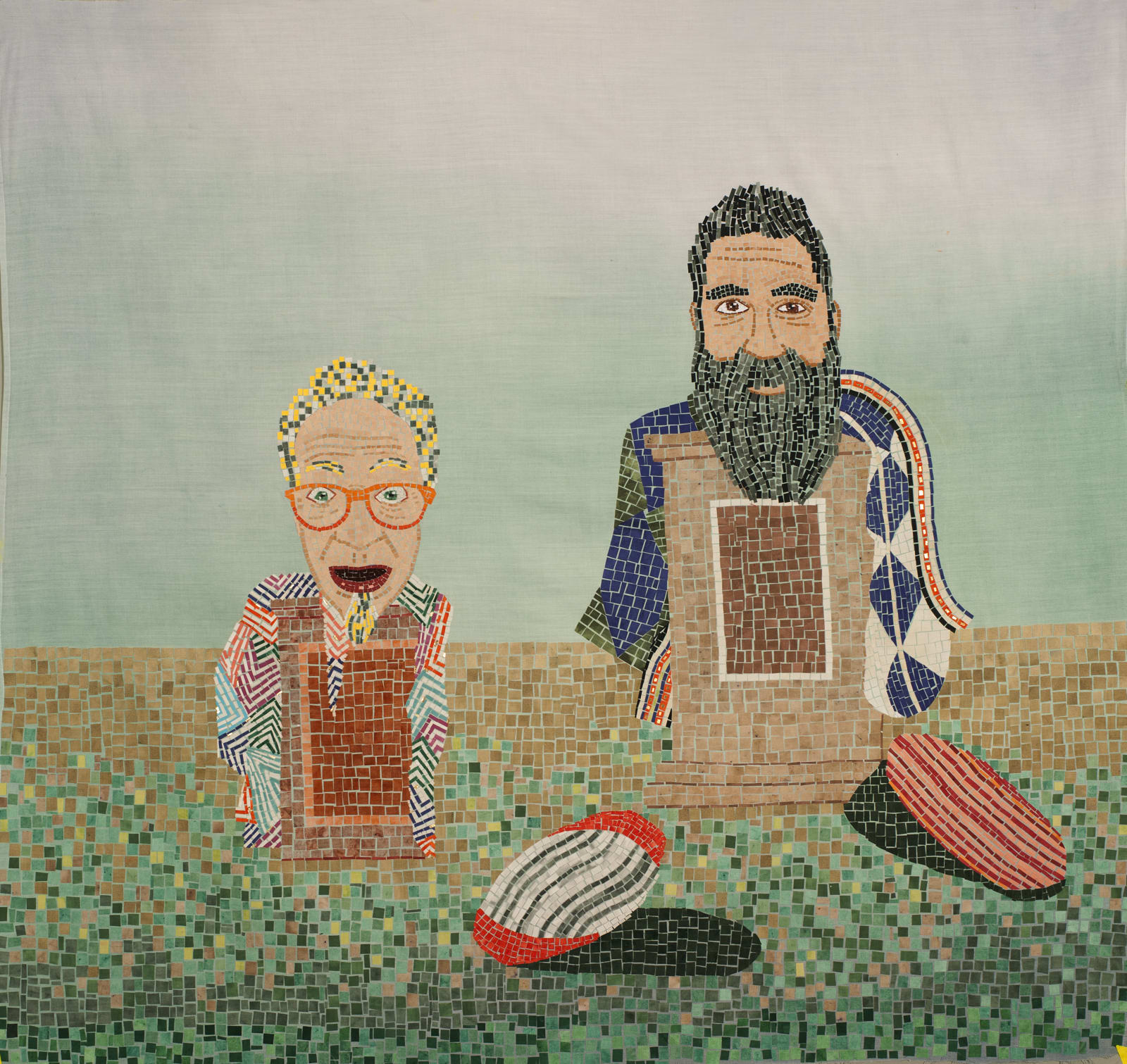Chiachio & Giannone Argentinian, b. 2003
Mosaico Pompeyano 2, 2017
Textile mosaic. Gummed fabric pieces glued with heat on dyed vintage sheets.
130 x 138 cm
USD 15,000.00
'When we visited the ruins of Pompeii and the Museum of Archaeology in Naples, Italy, we were fascinated by the mosaics: their technique, the colours, the materials, and the representations...
'When we visited the ruins of Pompeii and the Museum of Archaeology in Naples, Italy, we were fascinated by the mosaics: their technique, the colours, the materials, and the representations in them. On our return to Buenos Aires, we came with a desire to make mosaics. We weren’t interested in using ceramics or tiles in our work, but thinking about the possibility of transforming these mosaics into something soft and light, the possibility of continuing to expand the configurations of textiles and painting.
We began to reuse and dye fabrics which we then cut into small, gummed, square tiles that were glued with heat onto large reused and dyed sheets that belonged to us. We baptised this technique as ‘textile mosaic’, and it arises from the research and the intention of trying to expand the limits of the very configuration of textile art. It’s one more attitude of how we, visual artists trained in painting, transfer our knowledge in the usage of colour into the textile language, just as we do with embroidery.
As for the image, we are self-portrayed, and our faces rest on pedestals like Pompeian busts, almost like archaeological relics, as if we were calling ourselves heroes for valuing and giving visibility to the women artists of modernity who worked with textiles as painting.
The geometric representation comes from the representation and deconstruction of fragments of the works of Margot Rolf, Gunta Stölzl, and Sonia Delaunay, and the painted guards on the walls of the houses, palaces, and ruins of Pompeii.'
Chiachio & Giannone, 2020.
We began to reuse and dye fabrics which we then cut into small, gummed, square tiles that were glued with heat onto large reused and dyed sheets that belonged to us. We baptised this technique as ‘textile mosaic’, and it arises from the research and the intention of trying to expand the limits of the very configuration of textile art. It’s one more attitude of how we, visual artists trained in painting, transfer our knowledge in the usage of colour into the textile language, just as we do with embroidery.
As for the image, we are self-portrayed, and our faces rest on pedestals like Pompeian busts, almost like archaeological relics, as if we were calling ourselves heroes for valuing and giving visibility to the women artists of modernity who worked with textiles as painting.
The geometric representation comes from the representation and deconstruction of fragments of the works of Margot Rolf, Gunta Stölzl, and Sonia Delaunay, and the painted guards on the walls of the houses, palaces, and ruins of Pompeii.'
Chiachio & Giannone, 2020.
